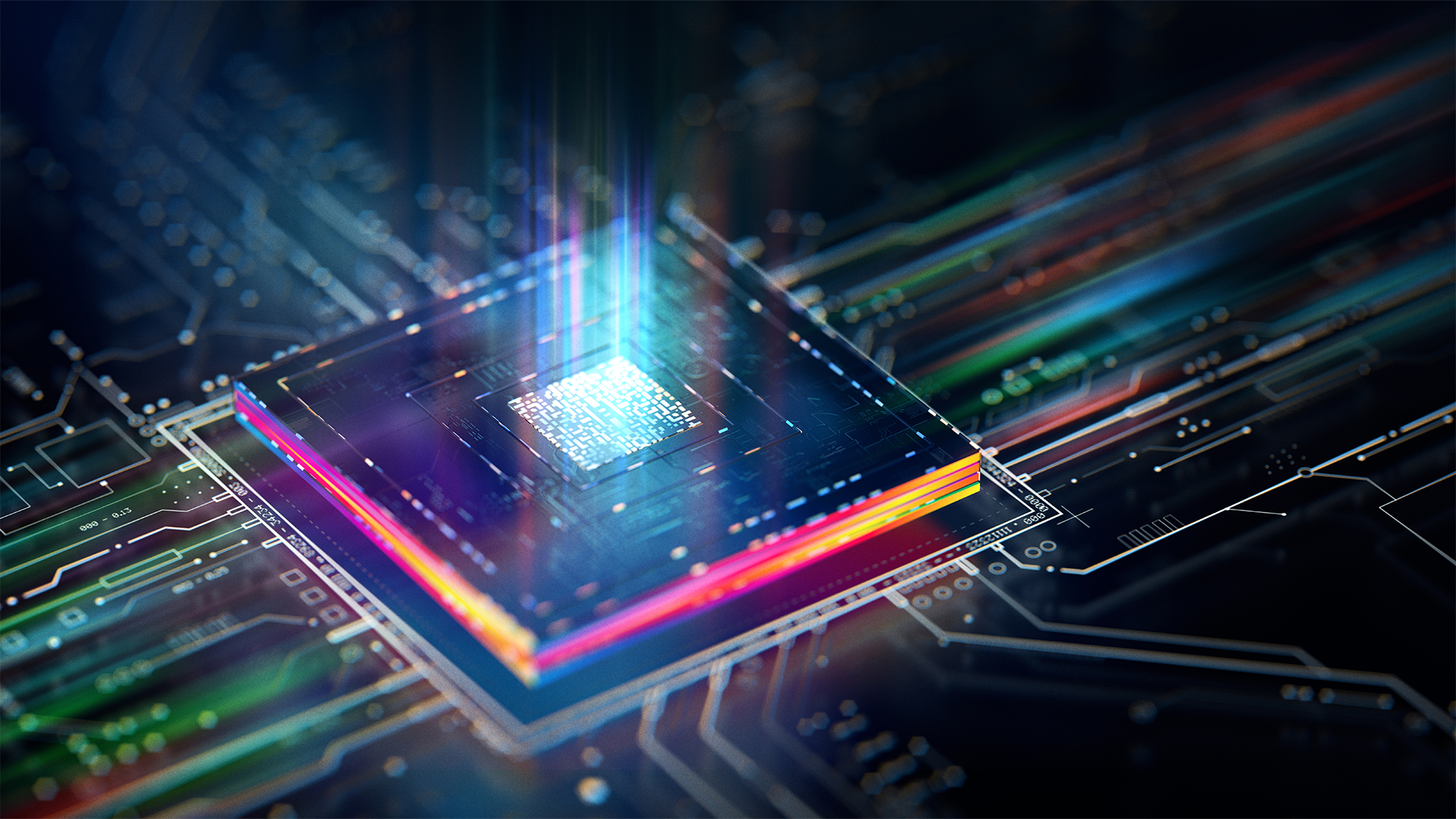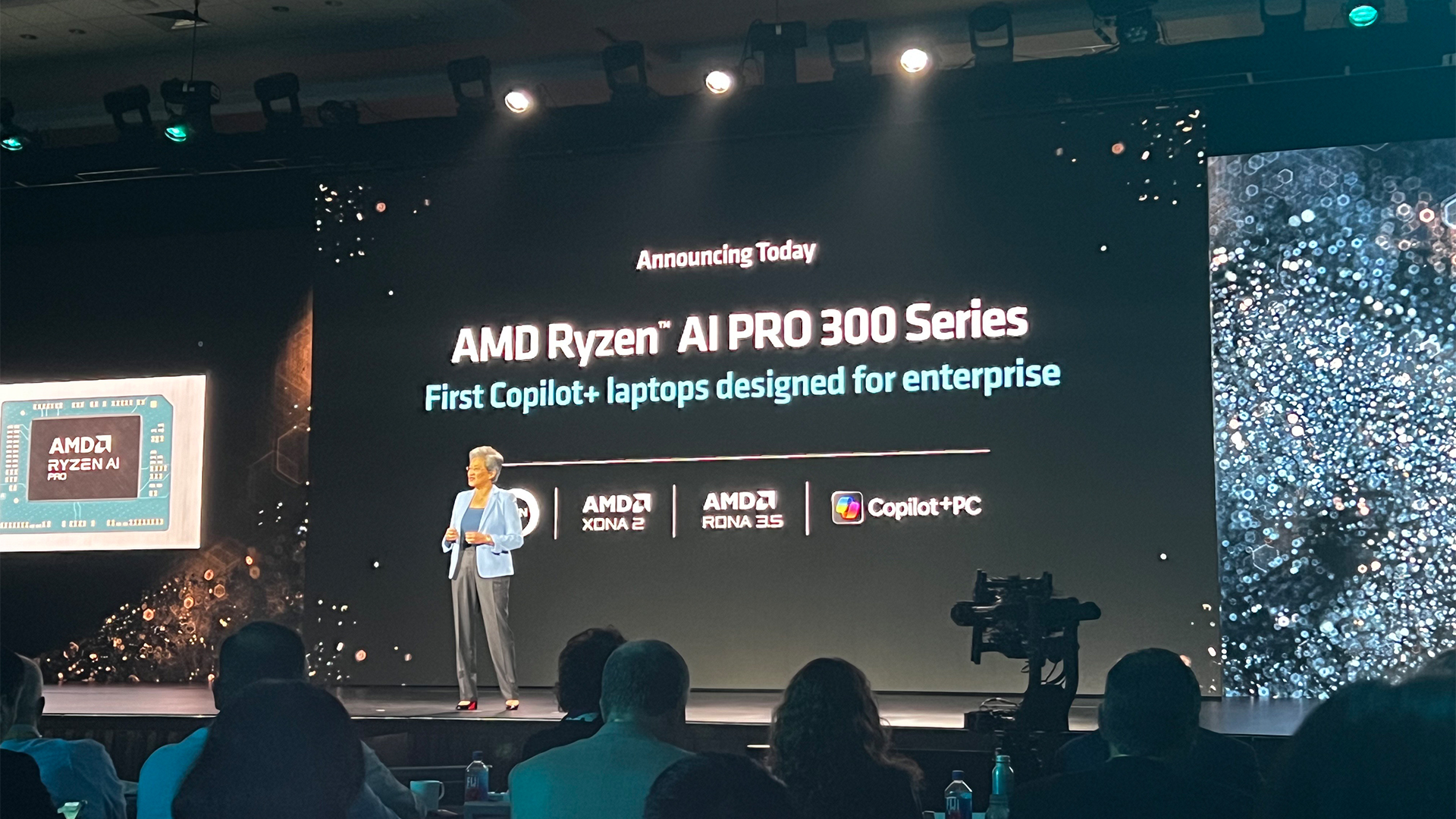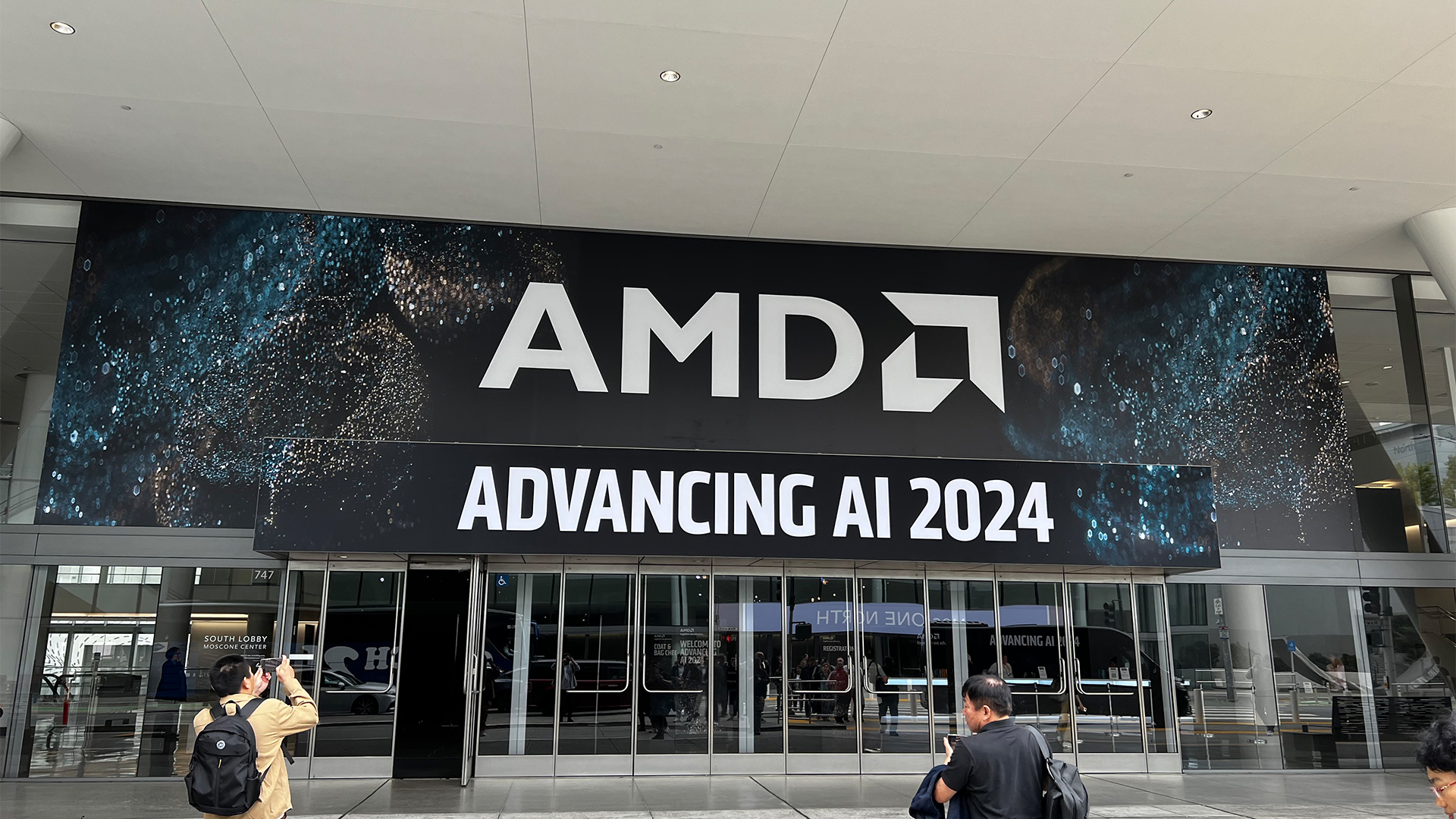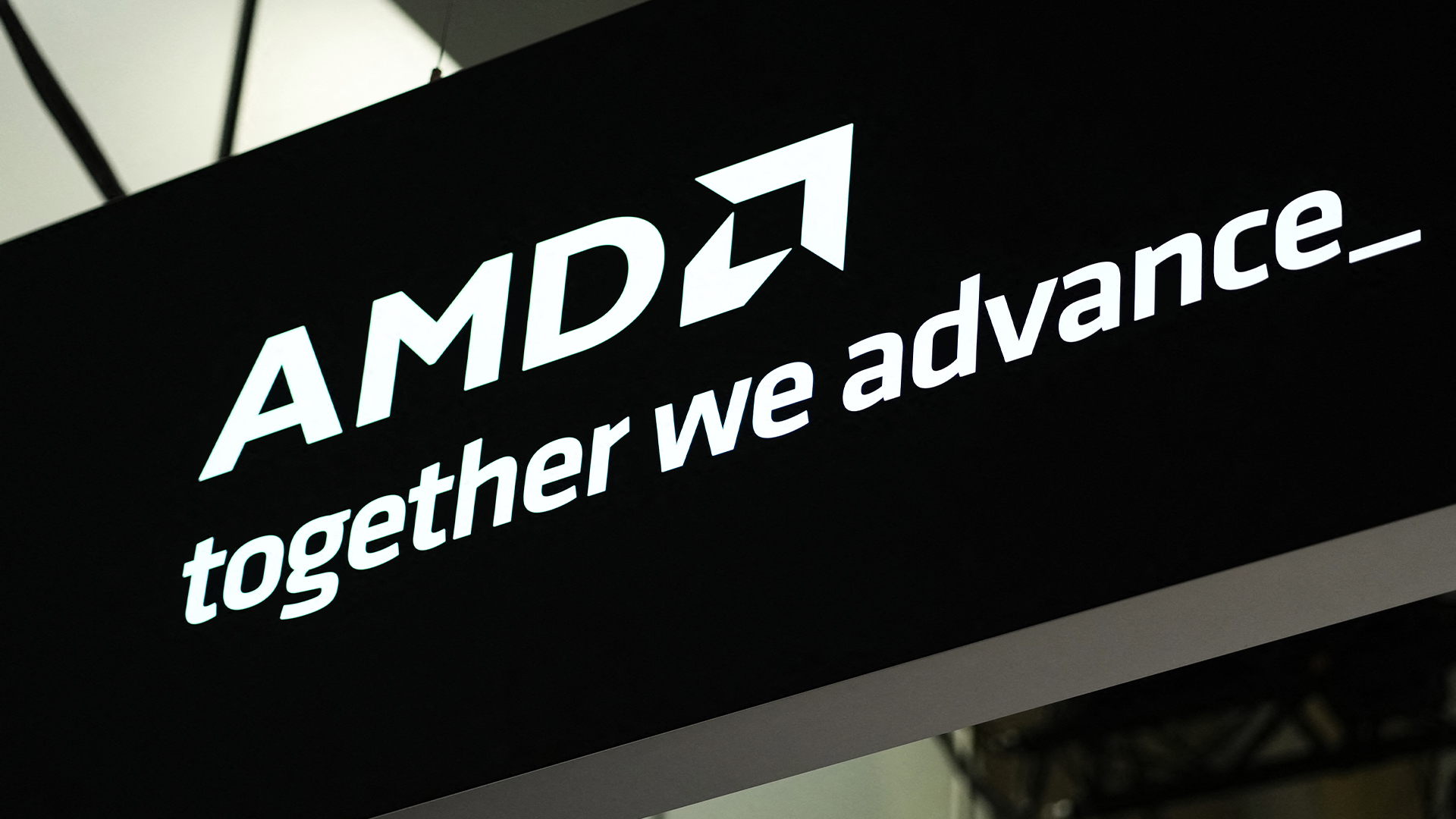AMD vs. Intel: Battle of the processors
Ed Jones looks at which processor should best suit your customers' needs, plus the latest news


AMD vs Intel: latest news
25/07/2018: AMD may double core count with upcoming Ryzen CPUs
AMD's next-generation Zen 2 architecture could sport 16 cores, if the latest rumours prove to be accurate, which would see the new processors doubling the core count found on mainstream desktop CPUs.
As reported by Tech Radar, a Chinese Chiphell forum user claiming to be in the know said that the 7nm Zen architecture will make 16-core CPUs the standard for the chip firm's AM4 Ryzen processors. The user added that AMD's TR4 processors will also continue to sport a maximum of 32 cores, whilst SP3 server processors could see a boost to 64 cores.
The rumour also points to Zen 2 introducing a 10-15% hike in instructions-per-clock (IPC) - which will improve performance for applications and games that do not utilise several cores and threads. By comparison, Digital Trends notes that the current Zen+ architecture marked just a 3% IPC boost over the original generation's design.
AMD is yet to release concrete details surrounding its new silicon - but CEO and president Dr Lisa Su revealed in the firm's Q4 conference call that the Zen 2 design has now reached completion.
"Our Zen 2 design is now complete, and we will be sampling to our customers later this year," she said at the time.
13/07/2018: Intel to acquire custom chip firm eASIC
ChannelPro Newsletter
Stay up to date with the latest Channel industry news and analysis with our twice-weekly newsletter
Intel has announced that it is to acquire custom chip manufacturer eASIC, in a move that will bring structured ASICs to the silicon giant’s programmable solutions portfolio.
Financial details of the takeover have not been disclosed but Intel said the addition of eASIC will improve a number of factors for customers – including time-to-market, features, performance, cost, power, as well as product life cycles.
4G and 5G wireless, networking and IoT markets will also receive boosts thanks to structured ASICs, the firm said.
“This combination brings together the best-in-class technologies from both companies to provide customers with more choice, faster time-to-market and lower development costs,” Intel explained in a release.
“Specifically, having a structured ASICs offering will help us better address high-performance and power-constrained applications that we see many of our customers challenged with in market segments like 4G and 5G wireless, networking and IoT.”
Intel also says that the move also brings about the opportunity to construct a “new class of programmable chip” that uses its Embedded Multi-Die Interconnect Bridge (EMIB) technology to combine Intel FPGAs with structured ASICs in a system in package solution.
The takeover is expected to be finalised during the third quarter of 2018 once customary closing conditions have been met.
16/11/2016:AMD releases updated ROCm
AMD has announced a new version of Radeon Open Compute Platform (ROCm), featuring software support for Radeon GPU hardware and new maths libraries.
Unveiled at SC16, the freshly updated platform (v1.3) also includes a host of modern programming languages, reinforcing its standing as the "most versatile open source platform for GPU computing", the company claimed.
AMD also announced planned support for OpenCL for upcoming ROCm releases - as well as the company's impending Zen-based CPUs, Cavium ThunderX CPUs and IBM Power 8 CPUs.
Raja Koduri, senior vice president and chief architect at Radeon Technologies Group, AMD, said: "Radeon Open Compute is a platform for a new era of GPU problem-solving, designed to harness the power of open source software to unlock new solutions for high performance computing (HPC) and hyperscale computing.
"Today's release of ROCm gives developers consummate flexibility in where and how they use GPU compute."
ROCm's expanded GPU support includes all Polaris architecture-based graphics products, including the Radeon RX 460, 470 and 480 graphics cards and Radeon Pro WX 7100, 5100 4100 GPUs.
Larry Wikelius, VP of the software ecosystem and solutions group at semiconductor firm Cavium, praised the ROCm expansion. He said: "The combination of AMD's GPU support of ThunderX along with the breadth of features of the ROCm software release is a valuable addition to Cavium's overall solution for the HPC and Hyperscale server market.
"Today's announcement by AMD is an excellent complement to the innovative features of ThunderX that include 48 ARMv8 cores, integrated I/O and dual socket configuration support that our customers and partners are deploying today in these markets."
20/10/2016
AMD has sealed a new deal that will see its Radeon Pro GPUs power Alibaba's cloud services.
The new partnership will provide an improved cloud experience for users of the Chinese e-commerce site, thanks to a considerable boost in graphics processing at Alibaba's Cloud data centres.
Approximately 35 percent of websites in China are currently hosted by Alibaba - and the company hopes the collaboration with AMD will see this figure rise.
Announcing the deal, Alibaba Cloud president Simon Hu said: "The partnership between AMD and Alibaba Cloud will bring both of our customers more diversified, cloud-based graphic processing solutions.
"It is our vision to work together with leading technology firms like AMD to empower businesses in every industry with cutting-edge technologies and computing capabilities."
Alibaba Cloud will use AMD's Radeon FirePro S7150 x2 GPUs - and the Chinese firm also hopes the venture will allow for future movement into virtual reality-based technologies.
Dr. Lisa Su, president and CEO at AMD, said: "The collaboration between AMD and Alibaba Cloud leverages the world-class technology and software engineering capabilities of both companies to meet the growing demand for standards-based GPU computing solutions capable of enabling more immersive and intuitive cloud services.
"Working closely with industry leaders like Alibaba Cloud helps ensure the investments AMD is making in our high-performance graphics and computing datacenter products continue to align with the needs of the broader cloud market."
The move has already provided a timely shot in the arm for AMD, with Market Watch reporting that the company's stocks rose 4.2 percent soon after the deal was announced.
18/10/16
AMD powers Alibaba cloud
AMD has sealed a new deal that will see its Radeon Pro GPUs power Alibaba's cloud services.
The new partnership should provide an improved cloud experience for users of the Chinese cloud, thanks to a considerable boost in graphics processing at Alibaba's datacentres.
Approximately 35 percent of websites in China are currently hosted by Alibaba - and the company hopes the collaboration with AMD will see this figure rise.
Announcing the deal, Alibaba Cloud president, Simon Hu, said: "The partnership between AMD and Alibaba Cloud will bring both of our customers more diversified, cloud-based graphic processing solutions.
"It is our vision to work together with leading technology firms like AMD to empower businesses in every industry with cutting-edge technologies and computing capabilities."
Alibaba Cloud will use AMD's Radeon FirePro S7150 x2 GPUs - and the Chinese firm also hopes the venture will allow for future movement into virtual reality-based technologies.
Dr. Lisa Su, president and CEO at AMD, said: "The collaboration between AMD and Alibaba Cloud leverages the world-class technology and software engineering capabilities of both companies to meet the growing demand for standards-based GPU computing solutions capable of enabling more immersive and intuitive cloud services.
"Working closely with industry leaders like Alibaba Cloud helps ensure the investments AMD is making in our high-performance graphics and computing datacenter products continue to align with the needs of the broader cloud market."
The move has already provided a timely shot in the arm for AMD, with Market Watch reporting that the company's stocks rose 4.2 percent soon after the deal was announced.
09/09/16
7th-Gen AMD processors launched
AMD has begun shipping its 7th-generation A-series processors.
The chips – codenamed 'Bristol Ridge' - will appear first in desktop computers from HP and Lenovo later this year, the company announced.
The CPUs ship with four of AMD’s “Excavator” cores and are available in 35 and 65-watt versions, enabling the chips to power a wide range of setups. AMD says the processors have the ability to provide the performance normally associated with 95-watt models.
The company adds that the CPUs – which were first introduced back in June – are set to rival Intel’s Core i5-6500 processors in terms of performance.
Radeon Graphics Core Next graphics are included – as is full support for Microsoft DirectX 12. The chips also boast improved video playback, supporting up to 4KUltra HD in H.264 and H.265 formats.
According to Tech Radar, Bristol Ridge chips have been found to outperform the Carrizo architecture by 20 percent in terms of speed, whilst providing 37 percent better GPU performance and an increase of 12 percent in the energy efficiency stakes.
AMD corporate vice president Kevin Lensing noted in a statement that the inclusion of Bristol Ridge in the new Lenovo and HP desktops signifies a key step in the company’s progression.
"First, it marks a major increase in productivity performance, streaming video and eSports gaming experiences sought after by today's consumers," he said.
"Second, because these new OEM designs also feature our new AM4 desktop platform, the motherboard ecosystem shows its readiness for our upcoming high-performance 'Summit Ridge' desktop CPUs featuring 'Zen' cores, which share the same platform."
28/06/16
Intel job cuts to affect the channel?
Intel is cutting a number of sales and marketing personnel in its distribution channel operation, according to reports.
In April, Intel announced it was going to axe 12,000 jobs, or 11 percent of its workforce, following continued falling PC sales. The chipmaker says it is shifting its focus to higher-growth areas, such as the datacentre and the Internet of Things (IoT).
Now The Register says an Intel spokesperson has told the publication: “To support our transformation, we are restructuring our sales organization to drive tighter alignment with Intel’s business units and fuel our growth engines. Customers can expect to see more specialized technical support, faster decision making, and streamlined processes with a strong focus on enabling a consistent and personalized customer experience.”
In an e-mail to employees, Intel CEO Brian Krzanich had said the job losses will occur by mid-2017 through “a combination of voluntary and involuntary departures, and a re-evaluation of programs.”
The vendor says it expects the job cuts to deliver $750m in savings this year and annual run rate savings of $1.4bn by mid-2017.
The Reg says Intel won’t confirm how many of the 12,000 total will lose their jobs in this latest round of cuts, but the DigiTimes reports the cuts will happen by the end of this month.
Elsewhere, the Financial Times is reporting that Intel is considering selling off its security business. The firm announced it was to acquire IT security vendor McAfee in August 2010 in a deal worth $7.68bn. It re-branded the business as Intel Security in January 2014.
The FT says that Intel has been talking to bankers about the future of its security unit in a deal that would be one of the largest in the sector.
24/06/16
AMD stock up 10% thanks to Zen and Polaris
It’s been a tough couple of months for Intel. Amid a shrinking PC market forcing 12000 staff to be axed and an ongoing legal battle to appeal a $1.4bn fine, things aren’t looking much better as arch rivals AMD hit the headlines this week.
In stark contrast to Intel, the fortunes of AMD are on the rise. They are hitting the headlines for all the right reasons, announcing a 10 percent boost in stock prices. This is driven primarily by Zen and Polaris.
Expectations are high as news of the new Zen processor continues to emerge. Everything we have seen so far from the upcoming Zen architecture for both CPUs and APUs has been impressive. Positive reactions across the industry have driven stock up as anticipation builds.
Despite the positive press for Zen, it’s actually Polaris that is playing the larger part in the current boost to AMD’s stock price. The new GPU architecture, built by the newly-formed Radeon Technologies Group is set to debut later this month amidst huge anticipation from the PC gaming industry. CEO, Lisa SU, played her part following numerous TV appearances and a trip to E3 2016 to showcase the new models which include the Radeon RX 460 and 470.
As the launch of Polaris and Zen draw closer, expect those stock prices to continue to rise.
23/06/16
Intel continues $1.4bn fine appeal
Intel continues to contest the $1.4bn (approximately £815m) antitrust fine it was slapped with in 2009.
Six years ago, the European Commission ruled that the chip manufacturer had abused its dominant position in the x86 processor market between October 2002 and October 2007.
The Commission stated that, by offering PC makers financial rebates to use its processors, Intel was attempting to push rival AMD out of the market.
Dell, Lenovo and HP were among big-name PC companies that were offered the financial incentives – with Intel possessing a 70 percent share of the x86 processor market at the time.
The EC concluded in 2009: “By undermining its competitors’ ability to compete on the merits of their products, Intel’s actions undermined competition and innovation.”
Intel paid the hefty fine after the ruling – but the company maintains that the outcome was unfair and has made one last effort to overturn the decision at the European Court of Justice, Luxembourg.
Bloomberg reports that Daniel Beard, lawyer for Intel, told the court that the European Commission had failed to analyse “all relevant circumstances” when determining if the “loyalty rebates” shut out rivals.
The website also quotes EC lawyer Nicholas Khan as questioning whether a company with such a large market share “can pursue a commercial strategy, the focus of which is the marginalisation or even the elimination of its only competitor.”
The final ruling, however, may take some time, notes PC World – with a report to be compiled by one of the court’s Advocates General, Nils Wahl, set to take between two to four months.
Judges will then state their decision – which the website states usually takes place between three and six months from the date of the hearing. However, it is also noted that - due to the hefty size of the fine - it could take even longer.
02/06/16
AMD unveils laptop chips 56 percent faster than before
AMD has launched its new high-end FX chips, which the firm claimed were 56 percent faster compared to its previous generation of laptop processors. It also said its entry-level processors were 52 percent faster than before.
It said its new AMD A-Series processors feature mobile-optimised “Excavator” x86 CPU cores for high-speed computing plus built-in Radeon graphics – with some models offering up to Radeon R7 graphics, which it said were aimed at eSports gaming and enhanced HD streaming capabilities.
The “Bristol Ridge” line-up (above) consists of 35- and 15-watt versions of AMD FX, A12, and A10 processors, while “Stoney Ridge” processors include 15-watt A9, A6 and E2 configurations.
Its high-end FX 9830P sports 3GHz base speeds (with maximum speeds of 3.7GHz), while the lowest end E2-9010 comes in at at 2GHz (maximum speeds of 2.2GHz)
AMD also claimed that the new chips had up to up to 53 percent higher graphics performance and up to 51 percent higher compute performance when the 7th Generation AMD FX processor is compared to the Intel Core i7.
It also said the “Stoney Ridge” APUs deliver up to 50 percent faster CPU core performance over the previous generation “Carrizo” APUs. It also claimed that the new AMD A9 APU provides up to 27 percent faster graphics performance than the Intel Pentium-4405U.
“Today’s launch of our 7thGeneration A-Series mobile APUs, to be followed closely by new Radeon RX Series GPUs and then our next-generation ‘Summit Ridge’ desktop processor powered by our ‘Zen’ core represent key proof points of our strategy to firmly re-establish AMD as a high-performance design leader,” said AMD president and CEO, Dr. Lisa Su at the Computex trade show in Taipei.
The firm is also set to launch at the end of the month its Radeon RX Series technology, which is said would provide VR experiences common to $500 (£346) GPUs in graphics cards that are less than half the cost. It expects to price select models starting at $199 (£138) to “effectively grow the addressable market for PC VR and accelerate economies of scale in the VR ecosystem.”
At the same time, Intel officially launched its next generation 10-core desktop processor, code-named Broadwell-E. It sports 20-thread processing and 25MB of shared cache.
The new chip also sees the introduction of Turbo Boost 3.0 technology. This manages clock speeds but also finds the chip’s fastest cores and shifts the heaviest workloads onto these.
It also supports higher speed DDR-4 2400MHz memory and a few core management and clock speed optimisations.
27/04/16
Intel CEO details Intel’s move to cloud
Intel CEO Brian Krzanich has shared his vision for transforming from a PC company to one that’s focused on the cloud and the datacentre.
Last week the firm announced it was is to axe 12,000 jobs (below), or 11 percent of its workforce, following continued falling PC sales.
Now, the CEO says it is shifting its focus to higher-growth areas, such as the datacentre and the Internet of Things (IoT).
In a blog Krzanich said that the cloud is shaping the future of the smart, connected world – and thus Intel’s own future. He added that the many “things” that make up the PC client business and the Internet of Things (IoT) are made much more valuable by their connection to the cloud.
He also said that memory and programmable solutions such as FPGAs will deliver entirely new classes of products for the datacentre and the IoT, 5G will become the key technology for access to the cloud and that Moore’s Law will continue to progress – with Intel taking the lead in delivering its true economic impact.
Krzanich said that with virtualisation and software increasingly defining infrastructure in the cloud and datacentre, Intel will drive more and more of the footprint of the datacentre to Intel architecture. However, he added that analytics key to unlocking the value from the datacentre.
“We’ll accelerate the power and value of analytics by continuing to innovate in high-performance computing, big data and machine learning capabilities,” he said.
22/04/16
AMD signs deal for Chinese firms to licence chip technology
AMD is taking the fight to Intel with the news it is to allow a new joint venture in China to produce X86 chips.
AMD is licensing its x86 processor and system-on-chip technology to a company called THATIC (Tianjin Haiguang Advanced Technology Investment Co. Ltd.), a joint venture between AMD and a consortium of public and private Chinese companies. In exchange, AMD said it expects to receive $293m in licensing fees plus royalties on sales of any chips developed by the venture.
AMD’s announcement helped its shares surge 23 percent in after-hours trading on the NASDAQ, according to the Wall Street Journal.
According to the Wall Street Journal, AMD’s chief executive Lisa Su, says the vendor planned to find new ways to make money from its intellectual property. “Our new licensing agreement is a great example of leveraging our strong IP portfolio to accelerate the adoption of our technologies more broadly,” she said.
Intel supplied 87.7 percent of all x86 chips shipped in 2015, Mercury Research estimated, while AMD accounted for 12.1 percent and Taiwan’s Via Technologies Inc. a fraction of one percentage point.
There may be a fly in the ointment regarding a 2009 cross-licensing agreement between AMD and Intel that says neither party can transfer rights to licensed technology to other companies.
A spokesman for AMD said the deal doesn’t violate the cross-licensing pact, citing the way the joint venture’s ownership is structured.
Intel also recently announced plans to begin manufacturing memory chips in China, but it has never licensed its x86 technology to partners in the country.
20/04/16
Intel to axe 12,000 jobs as PC market slumps
Intel is to axe 12,000 jobs, or 11 percent of its workforce, following continued falling PC sales.
The vendor says it is shifting its focus to higher-growth areas, such as the datacentre and the Internet of Things (IoT).
The restructuring initiative was outlined in an e-mail from Intel CEO Brian Krzanich (pictured) to Intel employees.
“The data center and Internet of Things businesses are now Intel’s primary growth engines, and combined with memory and FPGAs, form and fuel a virtuous cycle of growth. Together, these businesses delivered $2.2bn in revenue growth last year, made up 40 percent of our revenue, and the majority of our operating profit,” he said in the email.
The job losses will occur by mid-2017 through “a combination of voluntary and involuntary departures, and a re-evaluation of programs.”
“Today’s announcement is about accelerating our growth strategy,” said Krzanich. “And it’s about driving long-term change to further establish Intel as the leader for the smart, connected world. As we drive this transformation, there is an extraordinary opportunity ahead. We will emerge as a more productive company with broader reach, and sharper execution.”
Intel says it expects the move deliver $750m in savings this year and annual run rate savings of $1.4bn by mid-2017.
According to a report by Bloomberg, Intel also posted disappointing first-quarter revenue and gave a second-quarter sales forecast that fell short of analysts’ estimates.
Shipments of PCs provides Intel with more than half of its sales, but shipments fell by 10 percent in EMEA in Q1 2016.
Meanwhile, chief financial officer Stacy Smith will move to a new role as head of manufacturing and sales, the company said Tuesday in a statement.
Bloomberg reports that Intel’s client computing group, which makes and sells PC chips, had first-quarter sales of $7.5bn, a decline of 14 percent from the preceding three months, but a gain of two percent from a the year-earlier period.
19/04/16
Intel Apollo Lake processors promise slimmer, more powerful budget PCs
Intel has unveiled its new Apollo Lake processors aimed at low-cost laptops.
The new system-on-chip CPUs promise greater performance with features normally found in higher-end systems, such as 4K video playback.
A new generation of Pentium, Celeron, and Atom-based systems should be available in the latter half of this year. Apollo Lake is the next step of the Silvermont architecture that switched from Intel’s original Bonnell architecture, which powered Atom chips between 2008 and 2012.
With the new chip, Intel is promising cost savings of around $7.45 to manufacturers (according to slide here). The bill of materials savings for OEMs come from more integration of functionality on the chip as well as recommendations of components to use with the cheaper systems.
Intel said at its IDF16 event last week that Apollo Lake provides "the best balance yet of cost, performance, and battery life for the entry segment."
The processors will come with support for USB Type-C ports, 4K displays, and eMMC 5.0-based solid state drives. The chip will also feature Intel HD graphics based on the Skylake architecture and will be fabricated using 14nm process technology.
The new architecture promises improved CPU performance, hardware accelerated codecs, and improved battery life. It boasts up to four CPU cores based upon the Goldmont microarchitecture.
The processors are aimed at being used in so-called “cloudbook” systems to rival systems using Chrome OS, such as Chromebooks. These sub-$270 notebooks have been gaining ground in recent years as a budget alternative to traditional laptops.
The launch of Apollo Lake processors is likely to follow Intel’s Broadwell-E processor family launch planned for Computex 2016.
06/04/16
AMD Bristol Ridge makes early appearance
AMD has announced its new mobile 7th Generation AMD A-Series Processors will be available earlier than expected.
The processors – dubbed ‘Bristol Ridge’ – will power the new HP ENVY x360, with further ultrathin notebooks, convertibles and All-in-Ones to follow suit later in the year.
The new Bristol Ridge processors will allow users to take advantage of Ultra HD 4K video resolution and AMD Freesync technology for “fluid, artefact-free online gaming performance”, the company says.
In addition the processors will offer a 10 percent CPU improvement over last year’s Carrizo and will come in dual and quad versions.
Jim Anderson, SVP of Computing and Graphics Business Group, AMD, said: “We know that consumers want more for their money than ever before – sharper graphics, faster performance and longer battery life.
We have focused on working with key OEM partners to develop outstanding computing platforms that will fully take advantage of the powerful 7th generation AMD APUs.”
He added: “I’m excited that consumers will start to see some of these fantastic systems come to market so soon.
I’m very proud of the exceptional AMD engineering execution that enabled us to accelerate these exciting new products into the market for our customers and end users.”
AMD will be showcasing a further range of OEM designs at Computex 2016 in Taipei, Taiwan (May 31 – June 4).
01/04/16
Intel outs Xeon E5-2600 v4 processors in bid to boost cloud computing
Intel has announced a new family of its server processors designed to run heavy cloud workloads.
Its Xeon processor E5-2600 v4 product family designed for two-socket servers, according to the firm these chips will provide 20 percent more cores and cache than the previous generation, and supports the faster DDR4 2.4 GHz memory.
The v4 family includes chips with up to 22 cores and up to 44 threads per socket, up to 55MB of last-level cache (LLC). There is also support for up to 24 DIMMs per two-socket server.
According to a fact sheet provided by the company, there are 16 processors for two-socket servers, three for frequently optimised two-socket servers, two CPUs for low-power two-socket servers, one chip for two-socket workstations, and five processors intended for “storage and communications” workloads.
The Intel Xeon Processor E5-2699 v4 boasts 22 cores, a frequency of 2.2 GHz, 55MB of LLC cache, and a power envelope of 145 watts.
The family of chips also sport enhanced Turbo Boost Technology, better virtualisation performance, Intel TSX instructions, Intel AVX2 instructions, and support for Intel’s new Scalable System Framework.
“Enterprises want to benefit from the efficiency and agility of cloud architecture and on their own terms – using the public cloud offerings, deploying their own private cloud, or both,” said Diane Bryant, senior vice president and general manager of Intel’s Data Center Group. “The result is pent-up demand for software-defined infrastructure. Intel is investing to mature SDI [software-defined infrastructure] solutions and provide a faster path for businesses of all sizes to reap the benefits of the cloud.”
Intel also unveiled new solid state drives (SSDs) optimised for the Intel Xeon processor E5-2600 v4 family, enterprise storage and cloud deployments. The Intel SSD DC P3320 and P3520 Series are the first Intel SSDs to use the industry’s highest density 3D NAND technology to provide users with a highly efficient, dense storage solution. The DC P3320 offers up to a five-times performance boost compared to SATA-based SSDs, claimed Intel.
21/03/16
Intel could turn to AMD for graphics
Intel looks set to ditch Nvidia for AMD Radeon if rumours are to be believed.
Intel currently has a five-year deal with Nvidia worth $1.5bn, burt this is due to end in 2017. According to a Bloomberg report obtained by Barron's, Intel may start licencing graphics technology from its bitter rival.
The deal could be welcome new for AMD, which has been looking for ways to boosting revenues for a number of years now. It may also see AMD technology appearing in Intel’s integrated graphics chips as speculation is that AMD is a bit more flexible in its licencing terms than Nvidia.
While Intel and AMD battle it out in the CPU market, it is AMD and Nvidia that clash in the GPU market. AMD acquired graphics chip maker ATI several years ago. Only recently has made its GPU business into a separate group that covers software, hardware, and intellectual property.
AMD is expected to launch its Polaris graphics chip in June and this maybe the chance Intel has to capitalise on AMD’s latest offering.
11/03/16
Intel acquires sports technology firm
Intel is investing in ‘immersive sports’ with the purchase of Israeli firm Replay Technologies, which has developed a 3D video technology that’s being used by US professional sports broadcasters.
According to a blog by Wendell Brooks, SVP of Intel Corporation and president of Intel Capital, “Replay’s proprietary freeD format uses high-resolution cameras and computer-intensive graphics to let viewers see and experience sporting events from any angle.
He says immersive sports is attracting the attention of leagues, venues, broadcasters and fans.
“Immersive sports requires the high-performance computing Intel is known for, and it’s also data driven – fuelling the continued build out of the cloud. For athletes, coaches, broadcasters and fans, the ability to capture, analyse and share data adds compelling new dimensions to the game.
“As part of Intel, the team will focus on growing their existing business and advancing their technology with Intel to deliver faster freeD processing and new features like the ability to manipulate and edit personalized content. Technology now plays an unprecedented role in sports … and we’re just getting started.”
Intel hasn’t disclosed the purchase price but Israeli media puts it at around $175m.
According to Reuters, Replay's technology was used in the recent NBA’s All-Star Weekend, mainly giving fans a 360 degree view of the slam dunk contest. (Mark Cuban, owner of the NBA's Dallas Mavericks, also holds a stake in Replay.) Intel worked with Replay's technology to create a 3D video rendering of the court using 28 ultra high-definition cameras positioned around the arena and connected to Intel-based servers.
It was also used in the NFL’s Super Bowl.
02/03/16
AMD Zen: A serious challenge to Intel?
We share what we know about the 7th generation AMD processor, and explore some key features...
15/02/16
A look at AMD Carrizo
Launched in June 2015, Carrizo is AMD’s 6th-generation APU, succeeding Kaveri.
The processor is designed for notebooks and low-power desktops and is latest in a long line of attempts by AMD to break Intel’s grip on most important segment of the PC market, the $400-$700 notebook. This coveted segment of the market represents nearly 25 percent of all PC sales in 2015.
Has Carrizo done what AMD hope it will? We take a closer look.
10/02/16
AMD gains traction among notebook users
AMD claims it is gaining ground in the notebook market thanks to its 6th Generation AMD PRO A-Series mobile processors.
It says the processors’ inclusion in two new HP Inc. notebooks, new large scale enterprise deployments and the expansion of HP adoption of AMD FreeSync technology in its notebooks and displays is contributing to its growth.
The AMD PRO A-Series, which integrates AMD CPU, graphics, security and video processing IP into a single SoC design, will now power two new HP 600 series ProBooks.
“We’ve seen positive consumer and commercial response to our 6th Generation A-Series processors and the recent announcements by HP, along with AMD technology adoption by global companies and the popularity of AMD systems during the holiday season, help confirm the strength of our product,” comments Jim Anderson, SVP and general manager, Computing and Graphics Business Group at AMD.
AMD has been open about its plans to distance itself from its gaming heritage, (not counting its investment in eSports) – and the the “volatile” consumer market” – as it looks to grab a bigger slice of the enterprise market from Intel. Big wins alongside HP include a global facilities services provider ISS, and security firm Brink’s.
27/01/16
AMD investing in competitive gaming
AMD says it is investing heavily in the burgeoning eSports industry.
AMD says it’s investing in teams as well as “creating the latest generation of hardware to give gamers the extra edge.”
“Our APU products, such as the A10-7870K processor, offers the performance required in the latest eSports titles, helping to drive affordable access to eSports for all budgets,” says AMD’s EMEA senior sales manager, Neil Spicer.
Spicer adds that the vendor’s FreeSync monitor technology enables AMD’s monitor partners to include anti-screen tearing and stuttering solutions on its FreeSync technology-compatible monitors with no extra licensing cost.
In addition, he says: “Our support for software such as Microsoft’s DirectX 12 low level graphics API helps to bring better games to market without being limited by existing hardware.”
Last year, team-based strategy game Dota 2 saw 16 teams compete internationally for an $18 million prize pool. League of Legends drew in 36 million unique viewers for its 2015 World Championship Finals, with a peak of 14m concurrent viewers.
17/01/16
PC sales not our future, says Intel CEO
PC sales will become less important to Intel as the vendor looks to focus instead on the datacentre and Internet of Things (IoT) arena.
That’s according to Intel CEO Brian Krzanich, who says 2016 will see the firm “continue to drive growth by powering the infrastructure for an increasingly smart and connected world.”
Intel’s recently announced 2015 results saw datacentre, IoT, and memory delivered nearly 40 percent of Intel's revenue, and more than 60 percent of its operating margin in 2015. Datacentre Group revenue climbed five percent to $4.3bn. IoT revenue was $625m, up six percent.
Intel’s PC processors were still responsible for the bulk of its revenue in 2015: $8.8bn, though that was down one percent compared to a year ago. However, says Krzanich: “This business provides a foundation of IP and a source of cash flow, but it is not the sole driver of our growth.”
Intel reported net income of $3.6bn from the fourth quarter, down one percent from the same period in the prior year. Revenue was $14.9bn, up one percent from the same period.
04/01/16
Polaris previewed
AMD is this week previewing its new Polaris architecture for 2016 Radeon GPUs at CES in Las Vegas.
According to AMD, the Polaris GPUs will deliver gaming experiences at 61 percent less power than competing GPUs – opening the door to “unprecedented gaming and multimedia experiences” in thin and light notebooks and desktop gaming PCs.
Designed for the 14nm FinFET process, AMD claims the Polaris architecture boasts the largest generational jump in performance per watt in the history of AMD GPUs. The new architecture features its 4th generation Graphics Core Next architecture, a next-generation display engine with support for HDMI 2.0a and DisplayPort 1.3, and next-generation multimedia features enabling 4K h.265 encoding and decoding.
“Our new Polaris architecture showcases significant advances in performance, power efficiency and features,” says Lisa Su, president and CEO, AMD. “2016 will be a very exciting year for Radeon™ fans driven by our Polaris architecture, Radeon Software Crimson Edition and a host of other innovations in the pipeline from our Radeon Technologies Group.”
The first GPUs based on the Polaris architecture will ship in mid-2016.
17/12/15
Intel's bending processors
The execs over at AMD must think Christmas has come early this year as arch rival Intel is embroiled in scandal. Widespread reports claim Intel’s range of new Skylake processors are bending. It appears popular third-party CPU coolers are bending and damaging processors due to high mounting pressure.
Intel is seeking to distance itself as the cause, going on record to state mounting specifications for the Skylake processor remain unchanged from previous processors. This points the finger squarely at CPU cooler manufacturers, who are no doubt scrambling to ensure they meet Intel’s mounting specifications to avoid public embarrassment.
To combat the bending issue, MSI has launched a new product called the CPU Guard 1151. The tough metal back replaces Intel’s stock lever arm, adding extra strength to the Skylake processor range to prevent bending during CPU cooler mounting.
In other news, AMD has hit the headlines with the appearance of its new Radeon R9 390 4GB, now on sale in China. According to reports, the processor will not be coming to Europe or US markets, a fact which has baffled industry commentators. The 4GB version is likely to hold great appeal, due to its lower price, and would no doubt do well in the European and US market over the holiday period. Despite this opportunity, AMD confirms it has no present plans to introduce the R9 390 4GB to these markets.
07/12/16
AMD establishes challenge to Intel in enterprise
AMD has revealed plans to distance itself from its gaming heritage as it looks to grab a bigger slice of the enterprise market from rival Intel.
Speaking to Channel Pro, the processor manufacturer says it is doubling down on its investments in the commercial space, rather than continuing to focus on the “volatile” consumer market.
03/11/15
New AMD Radeon Software Crimson
AMD may have just one-upped Intel, with the news that it’s developing an “operating system for graphics”.
Dubbed ‘Radeon Software Crimson’, the suite replaces the company’s previous Catalyst range of graphics drivers and configurators.
The software will package tools, settings and applications that gamers and other high-intensity users can tweak and adjust to ensure maximum compatibility and performance from their GPU.
While primarily aimed at keeping up with rival Nvidia, the new tools are also notable for its fight against Intel.
Despite being the preferred CPU choice for many PC gamers, Intel is still lagging behind in terms of explicitly catering for them.
AMD’s new software offers hardware auto-detection, a ‘Game Manager’ to set specific settings for individual games, and even the ability to overclock different games automatically.
This is likely to go down well with gamers, and is currently a level of fine-grained GPU management that Intel does not possess.
AMD vs. Intel full review
When purchasing a laptop or desktop computer all consumers are faced with the same question, AMD or Intel?
While it may seem a small choice to some, the choice of processor family will dictate many of the other features within the computer. This becomes an especially important decision for consumers who chose to custom build their desktop computer.
In the end it all comes down to the consumer’s requirements. However, an ever narrowing performance difference – not to mention a range 600+ Intel and AMD CPUs – makes the choice between the two as complicated as ever.
In this post we’ll look at some of the broad feature differences to simplify and help you better advise your customers. We’ll also answer the burning question, should I stock AMD or Intel processors?
So let’s dive in.
Value for money
Note here that I have not mentioned price, both companies offer a range of price points, but if you focus solely on price then AMD chips are available for less. The entry level AMD Sempron dual-core processor starts at £19.99, that doesn’t mean however that it is any good. So, we must consider value for money.
Whilst AMD processors are viewed favourably for lower price points, consumer opinion tends to favour Intel as better value for money. The general consensus is that Intel processors deliver more computing performance per pound. This trend holds true from the low end of the market right up to the all singing, all dancing, Intel Core i7-5960X Processor Extreme Edition which will set you back £790.
Overall, consumers will get better value for money purchasing a Celeron, Pentium or Core processor from Intel.
Overclocking
For the uninitiated, ‘overclocking’ is the process of tweaking a processor to increase a CPU’s clock speed and provide greater levels of performance.
Across the range, AMD support overclocking more consistently than Intel. The AMD A-Series APUs support overclocking for as little as £25, with a further six AMD processors offering a price point under £70. Intel’s only budget processor supporting the feature is the Pentium G3258, for under £45. Looking at the mid-range processors, AMD continues to offer a series of processors with the overclocking feature enabled, whereas Intel doesn’t. Though, I’m still not sure this makes AMD a better choice.
Looking at the high-end processors, Intel wipes the floor with AMD. Offering over-clocked processors, some with up to eight physical cores, AMD has nothing within the range that can compete. For the home consumer looking for high end performance, you can’t buy anything quicker than an Intel processor.
Power efficiency
Here the gulf between Intel and AMD is at its widest. It is no secret that AMD has always struggled to match the performance of Intel. In recent years the gap has narrowed significantly, the sacrifice however is that AMD processors consumer far more power.
Like for like, AMD processors typically consume up to 20 percent more power. Take the Intel Pentium G3258 mentioned earlier as an example, it’s rated with a Thermal Design Power (TDP) of 53 watts. The closest AMD processor in price, the A6-7400K, has a TDP of 65 watts. To make matters worse, the Intel processor is also considered the quicker of the two.
The real impact: reduced battery life and more noise. If consumer is looking for performance tempered with a focus on battery life, you should be pointing them at the Intel range. This will be increasingly true for the new Skylake processors where power consumption is meant to have improved 20-30 percent.
Gaming and Application Performance
Here the decision becomes more complicated again. For consumers considering low-end gaming or using basic applications like Excel or Powerpoint, AMD is the more favourable option. AMD offers many processors which combine the processor with a Radeon graphics card on the same chip. These are excellent value for money and comprehensively meet the needs of the low-end gamer or application user.
Consumers considering high-end gaming or applications like Photoshop and Indesign should however be directed back to Intel. As alluded to earlier, Intel processors are typically faster. The i5 and i7 CPUs when combined with a high-end graphics card can produce far better quality and performance than competing AMD processors. This transitions into improved speed when managing the heavy workloads required from using high-end applications like Photoshop.
In summary
So, with all things considered, Intel often continues to be the better choice when it comes to processors. That being said, I would recommend stocking both Intel and AMD powered desktops.
It’s always best to offer a wide range, you’ll have different consumers, dependent on this, different processors work for different people.
Dan is a freelance writer and regular contributor to ChannelPro, covering the latest news stories across the IT, technology, and channel landscapes. Topics regularly cover cloud technologies, cyber security, software and operating system guides, and the latest mergers and acquisitions.
A journalism graduate from Leeds Beckett University, he combines a passion for the written word with a keen interest in the latest technology and its influence in an increasingly connected world.
He started writing for ChannelPro back in 2016, focusing on a mixture of news and technology guides, before becoming a regular contributor to ITPro. Elsewhere, he has previously written news and features across a range of other topics, including sport, music, and general news.
-
 M&S calls in NCSC after 'cyber incident' disrupts customer payments, online orders
M&S calls in NCSC after 'cyber incident' disrupts customer payments, online ordersNews Retail giant Marks & Spencer (M&S) has revealed it has been dealing with a “cyber incident” in recent days and apologized to customers amid disruption complaints.
By Ross Kelly
-
 Microsoft says workers should believe the hype with AI tools
Microsoft says workers should believe the hype with AI toolsNews Using AI tools paid dividends for some workers, but alternative research shows it could create problems for others down the line.
By Ross Kelly
-
 Why the CPU you chose is the key to Windows 11
Why the CPU you chose is the key to Windows 11The end of Windows 10 is on the horizon – it’s time to upgrade to an fTPM-protected processor
By Bobby Hellard
-
 AMD and Intel’s new x86 advisory group looks to tackle Arm, but will it succeed?
AMD and Intel’s new x86 advisory group looks to tackle Arm, but will it succeed?News The pair will look to make x86 CPU architecture more interoperable
By George Fitzmaurice
-
 AMD’s patient roadmap has become a highway to success
AMD’s patient roadmap has become a highway to successAnalysis While everyone was focused on Nvidia’s meteoric rise, AMD was preparing the hardware needed to take the fight to its long-time competitor
By Ross Kelly
-
 AMD just made a big statement in the AI PC race with its Ryzen AI Pro 300 series processors
AMD just made a big statement in the AI PC race with its Ryzen AI Pro 300 series processorsNews With all eyes focused on the AI PC craze, AMD looks to one-up the competition
By Ross Kelly
-
 AMD’s new Instinct GPUs might just blow Nvidia out of the water
AMD’s new Instinct GPUs might just blow Nvidia out of the waterNews The chip maker unveiled its newest Instinct GPU series in San Francisco today – and it’s very bullish on performance in the race with Nvidia
By Ross Kelly
-
 AMD Advancing AI live: All the news and updates as they happened
AMD Advancing AI live: All the news and updates as they happenedLive Blog ITPro has been live on the ground at the AMD Advancing AI conference in San Francisco this week – here's everything we learned in the big keynote with CEO Lisa Su
By Ross Kelly
-
 Why the world is about to be swamped with AI PCs
Why the world is about to be swamped with AI PCsNews With adoption rates set to surge, AI PCs will become far more mainstream in years to come
By Nicole Kobie
-
 AMD expands CPU portfolio with new EPYC 4004 Series
AMD expands CPU portfolio with new EPYC 4004 SeriesNews AMD has released its new EPYC 4004 Series processors to power entry level system designs and deliver cost savings to SMBs
By Daniel Todd